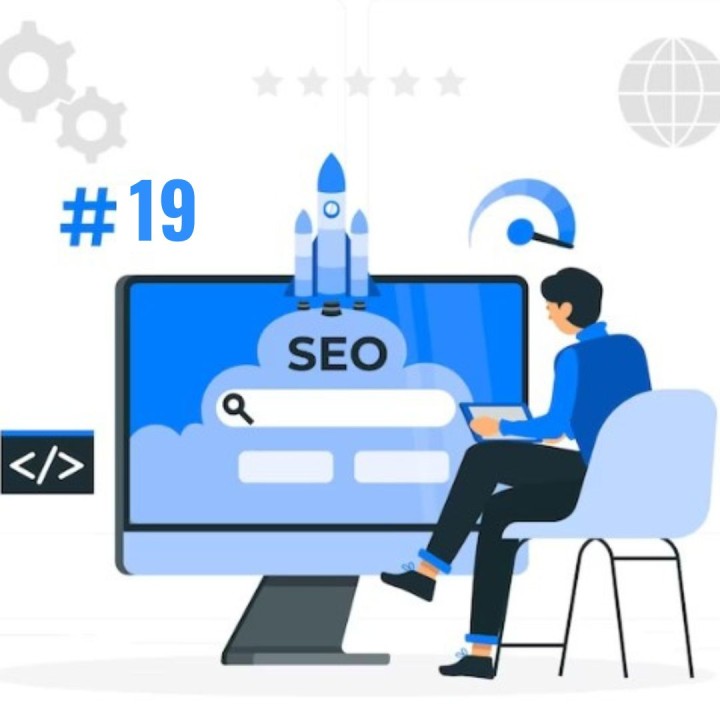What Is SEO?

Understanding SEO: Enhancing Your Website’s Visibility and Rankings
Search Engine Optimization (SEO) is the practice of improving a website’s visibility and ranking on search engine results pages (SERPs). This is achieved through a combination of strategies and techniques aimed at enhancing the quality and relevance of a website’s content. By doing so, search engines can better understand the website’s content and rank it higher, thereby attracting organic traffic and helping businesses reach their target audience.
In today’s competitive digital landscape, having a well-optimized website can significantly impact traffic and lead generation. Thus, SEO is a vital component of any online business’s marketing strategy. Without a robust SEO strategy, a website may remain invisible to potential customers, limiting its growth and success.
Key SEO Factors to Focus On
Several factors influence your search engine rankings. Here are some crucial ones to prioritize:
- Content Relevance and Quality
- Informative Content: Ensure your website content provides valuable information that meets the needs of your target audience. Content that answers questions, solves problems, or provides insights is more likely to be favored by search engines.
- Relevance: Your content should be closely related to the keywords and topics your audience is searching for. Irrelevant content can confuse search engines and users, leading to lower rankings.
- Engagement: High-quality content should engage readers, encouraging them to spend more time on your site, share your content, and return for more. This can include blog posts, articles, case studies, and whitepapers that are well-researched and well-written.
- Keywords
- Research: Conduct thorough keyword research to identify the terms and phrases your target audience uses to search for your products or services. Tools like Google Keyword Planner, Ahrefs, and SEMrush can be helpful.
- Integration: Integrate these keywords naturally into your content, metadata, headers, and other strategic places on your website. Overusing keywords, known as keyword stuffing, can lead to penalties from search engines.
- Long-Tail Keywords: Use long-tail keywords (more specific phrases) to capture more targeted traffic. These keywords often have less competition and can be easier to rank for.
- Website Structure and User Experience
- Navigation: Your website should be easy to navigate, with a clear, logical structure that helps users find what they’re looking for quickly and easily. A well-organized menu and internal linking strategy can help.
- Load Speed: Fast loading times are crucial for user satisfaction and search engine rankings. Optimize images, leverage browser caching, and use a content delivery network (CDN) to improve load times.
- Mobile-Friendliness: With more people accessing the internet via mobile devices, ensuring your website is responsive and performs well on all screen sizes is essential. Use responsive design techniques and test your site on various devices.
- Backlinks
- Quality Over Quantity: Focus on acquiring high-quality backlinks from reputable websites. These links are viewed as endorsements of your content’s credibility and can significantly boost your rankings.
- Natural Link Building: Aim to build backlinks naturally through valuable content that others want to link to. Avoid black-hat techniques like buying links, which can lead to penalties.
- Diverse Link Profile: A diverse link profile, with links coming from a variety of sources and types of websites, is more beneficial than many links from a single source.
The Importance of Content in SEO
Content encompasses all elements displayed on your website, including written content, images, videos, and audio. Search engines like Google aim to provide users with search results that are valuable and relevant to their queries. Therefore, SEO content is crafted to be easily understood by search engines and ranked higher.
High-quality, relevant content is crucial for attracting organic traffic and reaching your target audience. This content includes blog posts, articles, videos, infographics, and more. Quality content increases engagement, keeps users on your site longer, and encourages them to return.
Optimizing Your Content for SEO
To optimize your content for SEO, follow these key steps:
- Conduct Keyword Research
- Identify Search Terms: Conduct keyword research to identify the terms and phrases your target audience uses. Tools like Google Keyword Planner, Ahrefs, and SEMrush can provide insights into search volume and competition.
- Use Keywords Strategically: Integrate relevant keywords into your content, metadata, headers, and other strategic places on your website. Ensure the integration is natural and enhances the content’s readability.
- Create High-Quality Content
- Value-Driven Content: Develop content that provides value, is informative, engaging, and shareable. High-quality content can help attract more organic traffic and improve your website’s ranking on search engines.
- Consistency: Consistently publish fresh, relevant, and high-quality content to keep your audience engaged and coming back for more.
- Optimize Visual Content
- Images and Videos: Use images and videos to enhance engagement. Optimize them with relevant keywords in the file name, alt text, and descriptions.
- Infographics: Infographics are a visually appealing way of presenting complex information, making them highly shareable and linkable.
- Structure Content for Readability
- Readable Format: Use subheadings, bullet points, and short paragraphs for better readability and user experience. This makes it easier for readers to scan and digest the information.
- Engagement: Structuring your content in an easily digestible format can improve the user experience and keep visitors on your site longer.
- Regularly Update Content
- Refresh Content: Regularly updating and refreshing your content shows search engines that your website is active and relevant. This can positively impact your SEO and keep your audience engaged.
- Monitor Performance: Use analytics tools to monitor your content’s performance and identify areas for improvement.
Common SEO Content Mistakes to Avoid
Avoid these common mistakes to ensure your SEO efforts are effective:
- Keyword Stuffing
- Natural Integration: Overusing keywords in your content can lead to penalties. Focus on integrating keywords naturally and enhancing the content’s readability.
- Duplicate Content
- Originality: Ensure all content is original to avoid penalties and maintain high rankings. Duplicate content can confuse search engines and dilute your SEO efforts.
- Prioritizing Quantity Over Quality
- Quality Focus: Focus on producing high-quality content rather than just increasing content volume. Quality content is more likely to engage users and be favored by search engines.
- Ignoring Metadata
- Metadata Optimization: Use unique, descriptive titles and meta descriptions to improve visibility and rankings. Metadata plays a crucial role in helping search engines understand and rank your content.
Final Thoughts
Optimizing your content is essential for improving visibility and reaching your target audience. Implementing effective SEO strategies, such as conducting keyword research and creating high-quality content, can significantly enhance your search engine rankings and attract more visitors. By committing to continuous improvement and avoiding common mistakes, businesses can strengthen their online presence and achieve their marketing goals.
By following these guidelines, you can ensure that your content not only ranks well but also provides real value to your audience, driving engagement and conversions.
